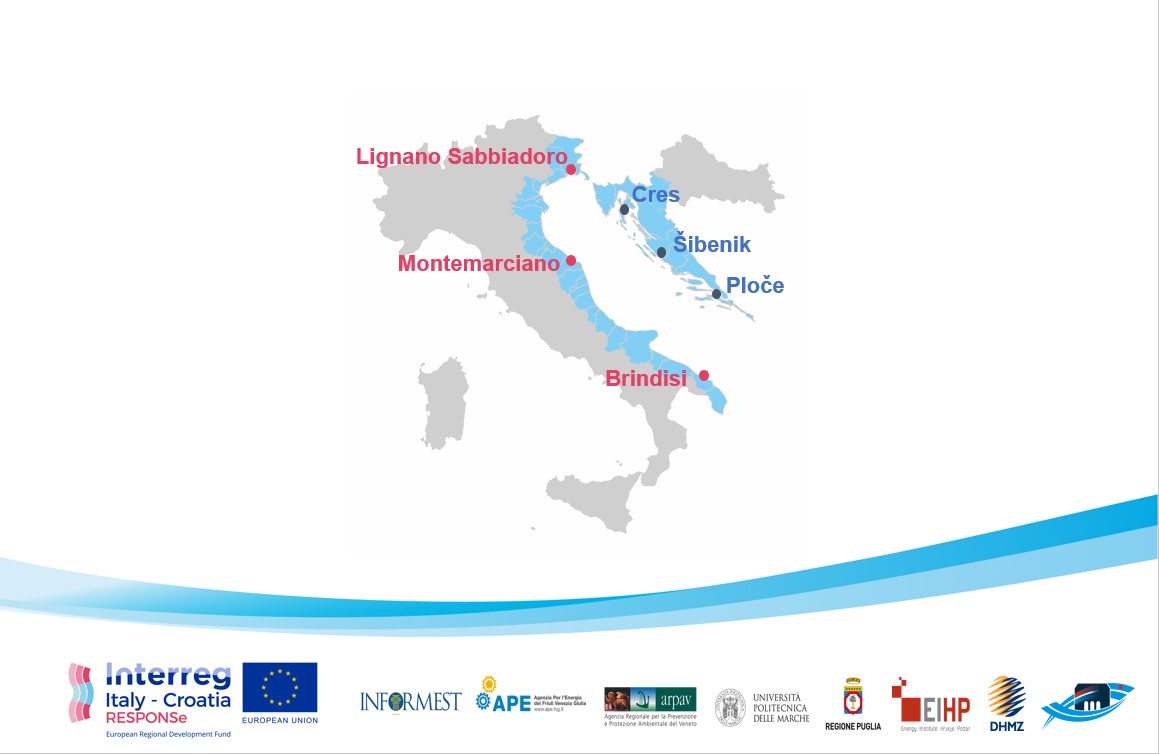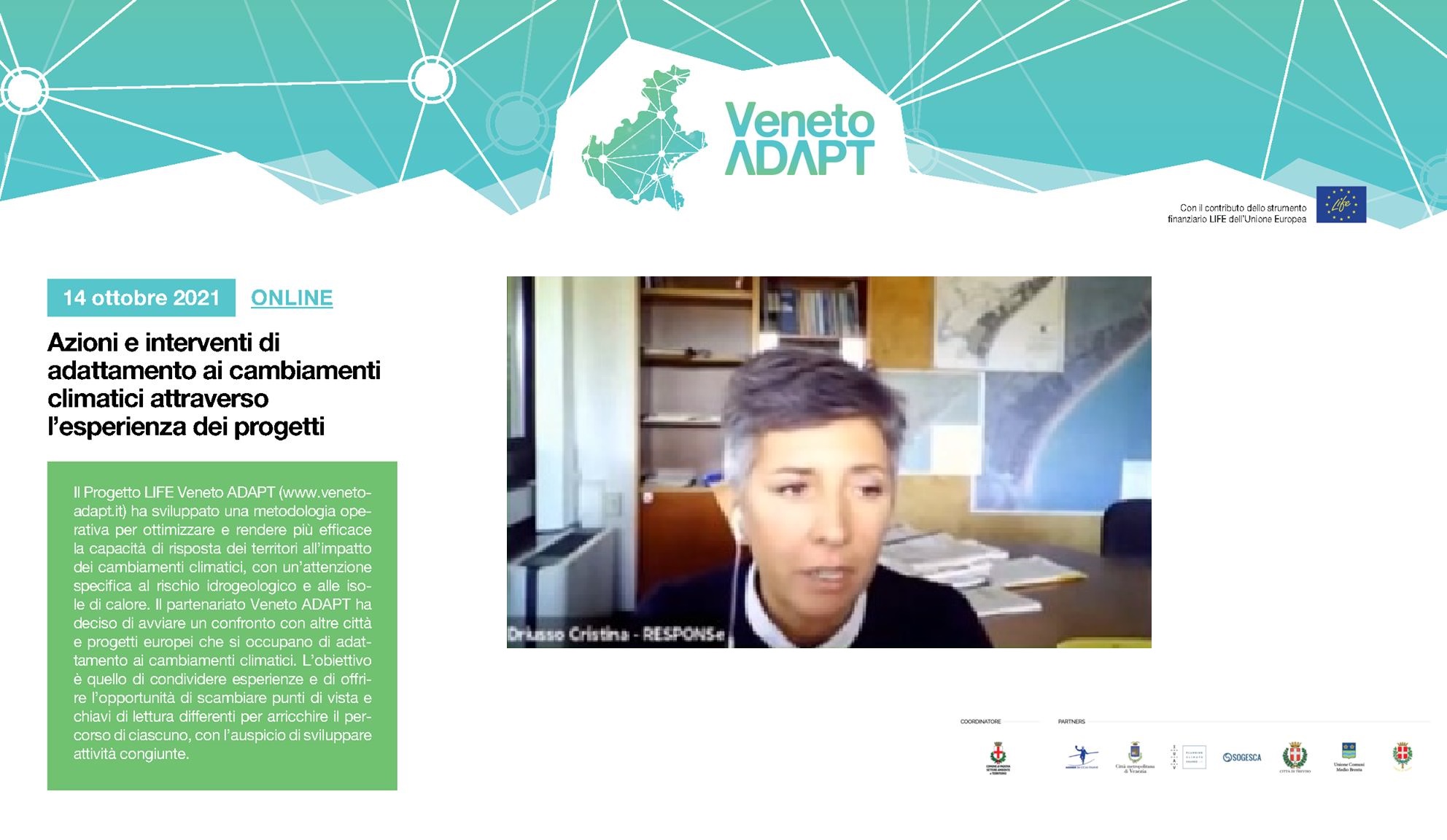WP4 activities are one of the focuses of the project RESPONSe.
Activity 4.1 (ended in April 2020) consisted in collecting all the available strategies at national and international level to adapt and mitigate climate change (top-down approach);
Activity 4.2 (ended in March 2021) consisted in involving local stakeholders in the definition of the perceived main effects of climate change in each pilot area (bottom-up approach);
Activity 4.3 (still ongoing) consists in the integration of Activity 4.1 with Activity 4.2 to create a DSS to be used by local Public Authorities for the definition of the best ad hoc strategy to mitigate and adapt to climate change.
Concerning the perception of the climate change crisis, deliverable 4.2 provided an overview of what stakeholders perceive is necessary to implement to mitigate and to adapt to climate change in the Adriatic basin. Through the use of perception questionnaires, local stakeholders (i.e., Public Authorities, citizens, local agencies and institutions, etc.) expressed their opinion about:
1. The perception of climate-related risks
2. The acceptance of climate-related risks
3. The attitude towards climate-related risks
4. The propension to introduce local and personal strategies to adapt to climate change (adaptation)
5. The propension to undertake local and personal actions to reduce anthropogenic greenhouse gas emissions (mitigation)
In addition, in order to define which adaptation and mitigation strategies would be more suitable for each pilot area and which strategy would be more accepted by the general public, stakeholders were asked in an additional survey to indicate:
1. Most voted climate impacts that will affect the territory
2. Most voted sectors in which implement adaptation measures
3. Preferred type of adaptation actions that should be implemented
4. Most voted sectors in which implement mitigation measures
5. Preferred type of mitigation actions to be proposed
Results are presented for each pilot area and specifically show that local stakeholders are aware of the current climatic crisis and of the role of human activities in determining the effects. Citizensin each pilot area agree that the main effect of climate change will be changes in temperature, while Public Authorities also consider significant (i) extreme weather, (ii) sea level rise, (iii) increased flooding and landslides and coastal erosion.


More diversified are the results about the perceived sectors that will be impacted by the effects of climate change. In Northern Adriatic, in Friuli-Venezia Giulia Public Authorities are more concerned for agriculture and breeding and the population is more concerned for biodiversity and ecosystem conservation. In Veneto the population is more concerned for biodiversity and ecosystem conservation, whereas Public Authorities are also concerned for coastal management and tourism and recreation. In Primorsko-Goranska Public Authorities are more concerned for biodiversity and ecosystem conservation and the population is more concerned for agriculture and breeding. In Central Adriatic, in Marche both Public Authorities and the population show the main concern for coastal management, whereas in Šibensko-Kninska both Public Authorities and the population show the main concern for biodiversity and ecosystem conservation. In Southern Adriatic, in Puglia both Public Authorities and the population show the main concern for agriculture and breeding, whereas in Neretva River Delta Public Authorities are more concerned for agriculture and breeding and the population is more concerned for biodiversity and ecosystem conservation.


Moreover, the consultation with the stakeholders shows that the adaptation measures that they would like to have implemented in their territories should be mostly addressed to (i) coastal management, (ii) water resource management, and (iii) aquaculture and fishery, together with public health. For the stakeholders of Northern and Southern Adriatic the interventions should be mostly transversal (which means integrating grey, green and soft measures), while for the stakeholders of Central Adriatic interventions should be mostly soft. On the other hand, mitigation measures should be mostly addressed to (i) agriculture, forest and land use, (ii) coastal management, and (iii) biodiversity and ecosystem conservation. In Northern Adriatic interventions should be primarily transversal, in Central Adriatic interventions should be primarily soft and transversal, while in Southern Adriatic intervention should be mainly green and transversal.
Starting from these results, last step of WP4, Activity 4.3, will indicate the best measures to implement in each pilot area among the available measures collected during Activity 4.1.
To go deeper, please read the following project deliverables:
Deliverable 4.1 State-of-the-art actions for climate change mitigation and adapation in the Adriatic basin
Deliverable 4.2 Engagement of Public Authorities and development of Adriatic Adaptation strategies



